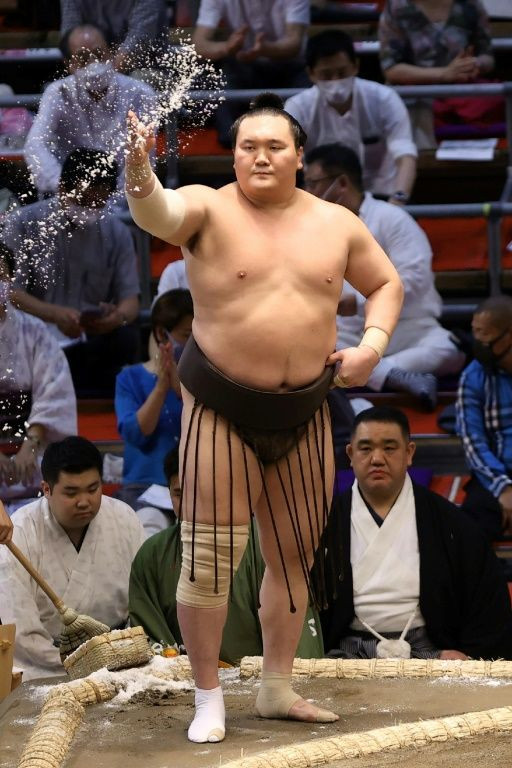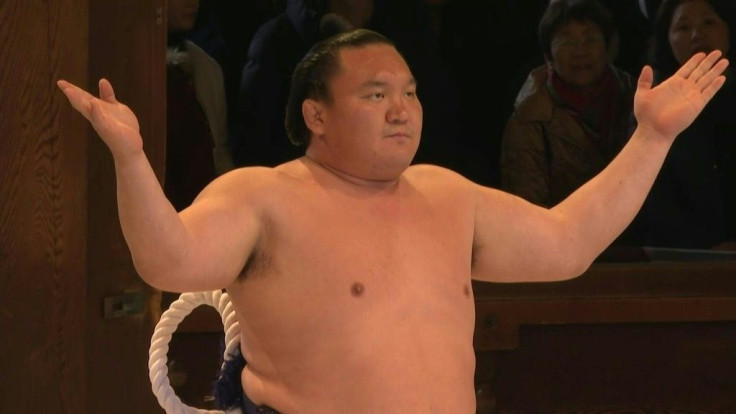Hakuho's Retirement Leaves Sumo Facing 'Void' At Top
Sumo will struggle to fill the "void" left by the retirement of its greatest-ever champion Hakuho, experts say, with few new stars emerging and public interest in the ancient Japanese sport likely to wane.
Hakuho helped usher in a new wave of sumo popularity with a record 45 tournament wins, drawing huge crowds to his epic battles with arch-rival Asashoryu in the late 2000s.
But the Mongolian-born 36-year-old handed in his retirement notice on Monday after persistent trouble with his right knee, leaving fans wondering how sumo will cope in his absence.

Sumo commentator John Gunning told AFP Hakuho was "one of those athletes that transcend their own sport", likening him to football's Pele or basketball's Michael Jordan.
His departure leaves just one wrestler, Terunofuji, at sumo's highest rank of yokozuna -- and even his long-term future is unclear.
"I don't see anybody that's going to fill the void," said Murray Johnson, another commentator.
"Terunofuji is the only one that can take that role, but with his knees, how long does he last? If he lasts any longer than a couple of years, that would surprise me."

The 29-year-old Terunofuji only reached the yokozuna rank in July, after an injury-plagued career that saw him drop to the second-lowest division at one point.
By contrast, Hakuho was sumo's longest-serving yokozuna, with over 1,000 bouts at the rank.
His titanic tussles with charismatic bad boy Asashoryu were the stuff of legend, pitting the popular Hakuho against the man the crowds loved to hate.
Asashoryu retired in 2010, but two years later Hakuho had another yokozuna rival in the shape of Harumafuji. Kakuryu and Kisenosato later joined them at the sport's highest rank.

Gunning says such "storylines" are what drives sumo's popularity.
"Sumo is a sport that has always been based around rivalry at the very top of the rankings," he said.
"What you really want is the best of the best going at it, all the time. So with Hakuho gone and Terunofuji not having a rival of the same standing, there's going to be a dip in interest."

Gunning says there is "hope on the horizon", and names Hokuseiho -- a two-metre-tall, 19-year-old prodigy scouted by Hakuho -- as a possible future star.
But the current crop of wrestlers has been less than convincing during Hakuho's injury-enforced absence over the past year.
A string of journeymen have emerged from the pack to win their first titles, only to sink back into mediocrity.
Meanwhile, the wrestlers at the second-highest rank of ozeki have consistently disappointed.
Sumo journalist Shoko Sato says the sport could soon find itself without a yokozuna for the first time since the period between May 1992 and January 1993.
"All the current ozeki are weak, so there might not be any new yokozuna for a while, and Terunofuji's knees are bad so I don't think he'll be around for long," she said.
"I'm worried that interest in sumo will gradually decline."
The coronavirus pandemic makes it difficult to judge sumo's current popularity, with several tournaments cancelled or held behind closed doors.
The sport has made a concerted effort to court younger fans in recent years, and the internet has also helped it attract a sizeable overseas audience.
Gunning believes interest has cooled slightly since Hakuho's injury troubles began, and that his departure will lead to an inevitable "dip in popularity".
Commentator Johnson agrees that the sport will overcome this latest bump in the road.
"Everyone says that if you look in the crowd, it's just a bunch of old men and women," Johnson said.
"Well that might be the case, but it will just be a new bunch of old men and women."
© Copyright AFP {{Year}}. All rights reserved.





















